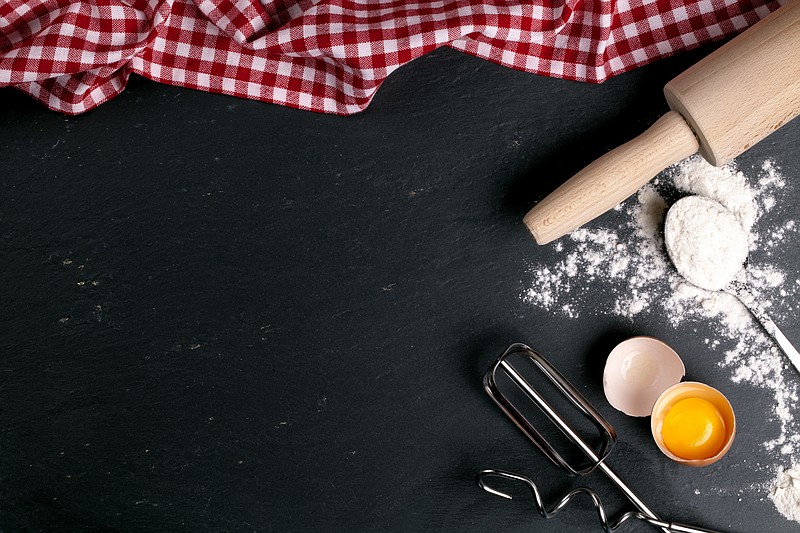It's probably not news to many of us that, per the Wall Street Journal, cauliflower is the new kale. It seems to wear many hats, come in many disguises and be a cream-colored base for many a tasty treat. So here's an anonymous request for buying or making gnocchi from cauliflower, for cauliflower rice, and "Could you tell me what is the best-tasting and most nourishing gluten-free pasta?"
GO-TO BISCUITS
As promised, here's Jan Antman's go-to biscuit recipe; she's pretty sure it came originally from Fare Exchange. Today's submission begins with an important piece of advice. "It's better to have a kind of wet dough, especially for a beginner. If you are unsure about what it should look like, go with a wetter dough. You can always add a bit when you are patting the dough out. I think the thing with biscuits is mostly using a gentle hand. So many folks treat it like they are making bread. And it just doesn't work."
No-Knead Biscuits
4 cups Southern self-rising flour (like Martha White or White Lily)
1 tablespoon baking powder
1 tablespoon sugar
2/3 cup shortening (I use coconut oil)
Up to 2 cups whole-fat buttermilk
Heat oven to 425 degrees.
Stir together flour, baking powder and sugar.
Using a pastry cutter or forks, cut in shortening or coconut oil. Mixture should resemble coarse meal. This is a little harder to do with the coconut oil, but I think worth the extra effort.
When the fat is cut into the flour, add buttermilk. You want just enough to have a soft dough. It should pull together into a soft ball in the bowl.
Turn out onto a floured surface. Using floured hands or a rolling pin, pat or roll out to about 1 inch thick. It doesn't hurt to knead the dough a little, but VERY gently or biscuits will be tough.
Cut straight down with a biscuit cutter. Do not twist.
Place with sides touching on a hot, greased dark pan. I use cast iron.
Brush tops with melted butter, and bake 15 to 18 minutes until tops are golden brown.
This makes about 16 biscuits. The recipe halves easily.
FOR COTTAGE CHEESE
Thank you, Mary Ann McInturff, for reminding us of one of the tastiest uses of cottage cheese, this dilly bread from Celia Marks in her cookbook "Come Into My Kitchen."
Dilly Bread
1/4 cup warm water
1 package yeast
1 cup cottage cheese
2 tablespoons sugar
2 teaspoons dill seed
1 tablespoon instant onion flakes
1/4 teaspoon baking soda
1 teaspoon salt
1 tablespoon butter, softened
1 egg, unbeaten
2 1/4 cups all-purpose flour
Melted butter
Kosher salt
Warm large bowl by allowing hot water to stand in it a few minutes. Empty, then pour in 1/4 cup warm water; add yeast, and stir with wooden spoon until dissolved. Warm cheese slightly in double boiler over warm (not hot) water. Add to batter, then beat in sugar, dill seed, onion flakes, baking soda, salt and butter. Add egg, then flour, stirring until all flour is moistened. With sticky dough still in bowl, knead until it appears slightly smooth. Add very little flour; none is preferable.
Grease top of dough, cover with cloth, and let rise until almost double in bulk - about an hour. Punch down. Put dough into greased loaf pan. Allow to rise about 40 minutes or until dough has risen at least to top of pan.
Bake at 350 degrees for 35 to 40 minutes. When done, brush with melted butter, and sprinkle with kosher salt.
This freezes well.
This recipe was originally written for 6 miniature loaf pans, so baking time could vary.
DIETARY HELP
The many among you who watch for word from Mr. and Mrs. Sunday, here is their expertise on a variety of topics.
Dietary Suggestions for Health Challenges:
"One of us has health challenges similar to Ms. B's, so our hearts go out to her. It's hard to recommend recipes without knowing her particular diseases and strategies for dealing with them. There are a few general things we can suggest."
* Diabetes: If you want to understand your diabetes, look into the work of Dr. Richard K. Bernstein; a diabetic himself, trained as an engineer, pioneered home blood sugar testing, became an MD (endocrinologist) and started a crusade to educate people about diabetes. We used to give a copy of his book to every diabetic we knew until he put most of it online. http://www.diabetes-book.com/read-online-diabetes-solution/
Yes, there are recipes.
* Salt control "is very difficult as it's hidden in almost all ready-to-eat foods. Restaurants generally oversalt food. You'll probably have to wean yourself from salt rather than quitting cold turkey. You'll need to be religious about reading food labels.
"One trick we've found useful is to only salt what hits your tongue; that is, cook without salt, salt each bite (slightly) individually and then flip the bite so that the salted layer hits your tongue first.
"We miss Papa Dash, which was salt diluted with maltodextrin to make it easier to sprinkle only a little on at a time.
"Be very careful with salt substitutes; many contain a lot of potassium, which can have heart side effects. Discuss with your heart team.
"Nutritional yeast is non-dairy and low-sodium; try using it where you use salt."
* No-cook fish: The Sundays' next topic pulls you in with a question and an immediate answer. "How about a no-salt, no-sugar, no-fat strongly flavored appetizer/main?"
Barbados-Style Ceviche
This is loosely adapted from a recipe in "The Gentleman's Companion, Volume 1."
1 pound any firm-fleshed white fish (I strongly prefer bay scallops) cut into bite-size pieces
1 medium to large sweet onion (Vidalia if you're a Georgia chauvinist), sliced fine (the volume of the onion should be roughly that of the fish)
3 to 4 large cloves garlic, minced, chopped, crushed, stomped or otherwise mangled
3 to 4 bay leaves, whole
1/4 teaspoon white coriander seed
1/4 teaspoon dry mustard
1/8 teaspoon dry ground ginger
1 pinch ground cloves
1 pinch cayenne (red) pepper, or to taste
Juice from 4 to 8 limes (actually enough juice to cover all the other ingredients, about 3/4 cup)
None of the above measurements are critical. Feel free to fiddle with the taste (we did).
Toss all this stuff into a glass bowl or (preferably) a large zip-top bag and mix, making sure everything is in contact with the lime juice. Put it in the refrigerator overnight or longer to soak, where the lime juice will pickle the fish (no cooking needed - the acid in the lime juice firms up the meat and destroys any nasties). Turn and redistribute the contents of the bag periodically if you think of it.
Serve decorously, and be sure to mention how hard it was to cook, slaving away over a hot stove, etc. We've served with toothpicks, on a bed of lettuce, as part of a salad and on crackers.
The hardest part of this dish is squeezing the lime juice. We do ceviche often enough that we bought one of those lime squeezers that look like giant garlic presses, usually colored green.
We can promise more next week. Please come along for March's final column.
REQUESTS
* Cauliflower gnocchi
* Cauliflower rice
* Best gluten-free pasta
TO REACH US
Fare Exchange is a longtime meeting place for people who love to cook and love to eat. We welcome both your recipes and your requests. Be sure to include precise instructions for every recipe you send.
Mailing address: Jane Henegar, 913 Mount Olive Road, Lookout Mountain, GA 30750
Email: chattfare@gmail.com

